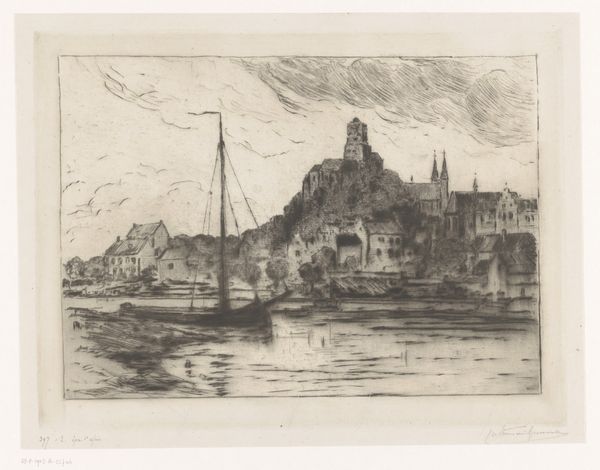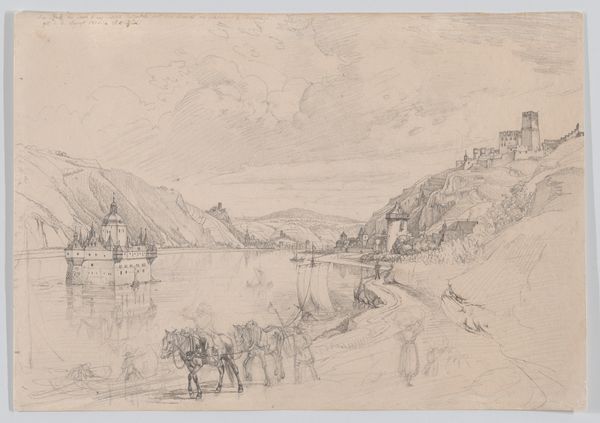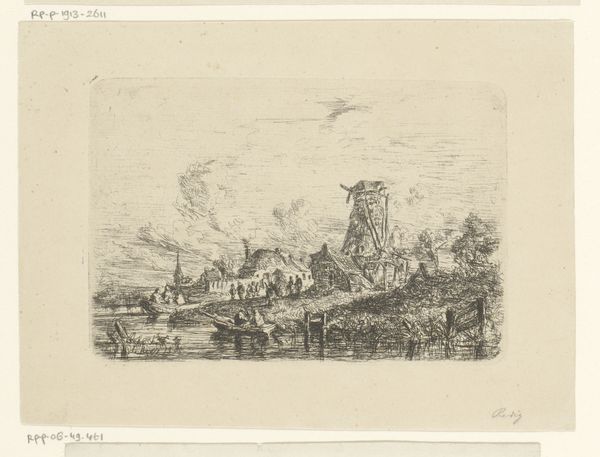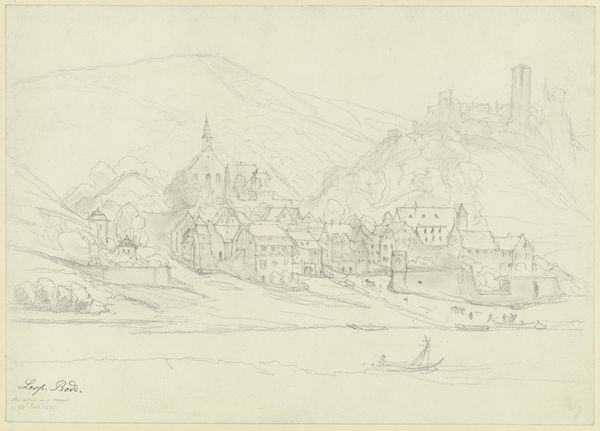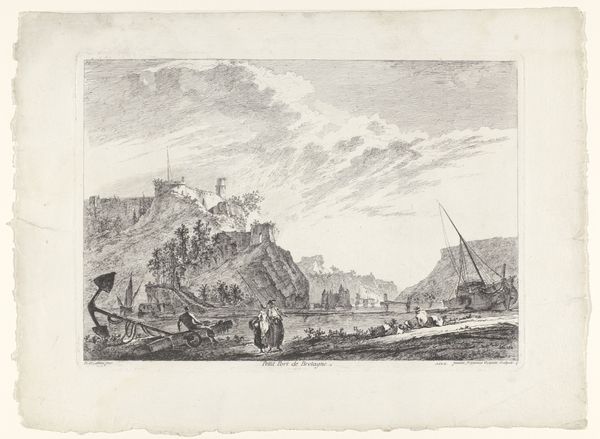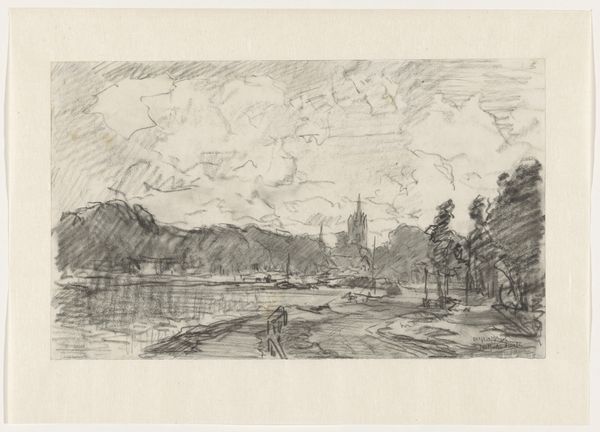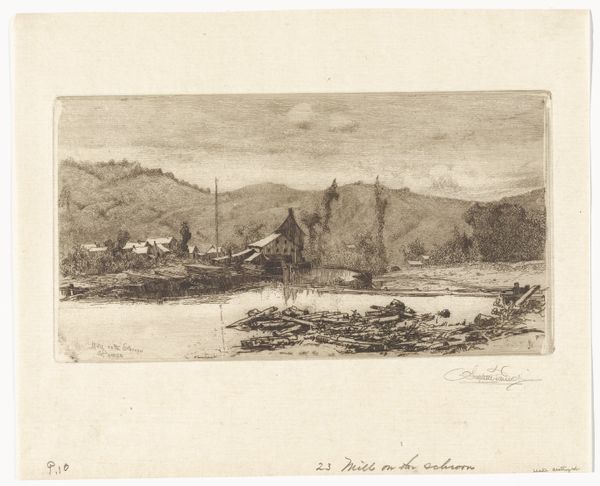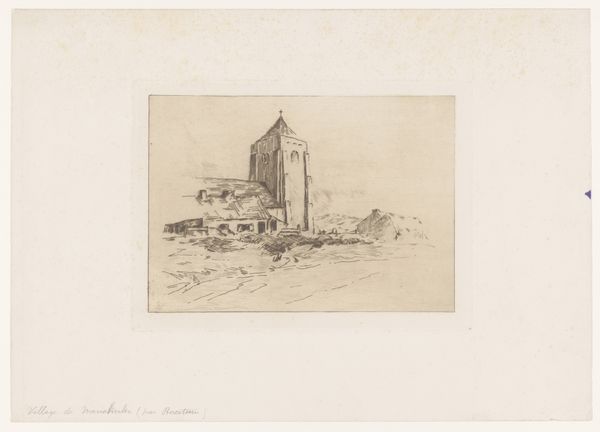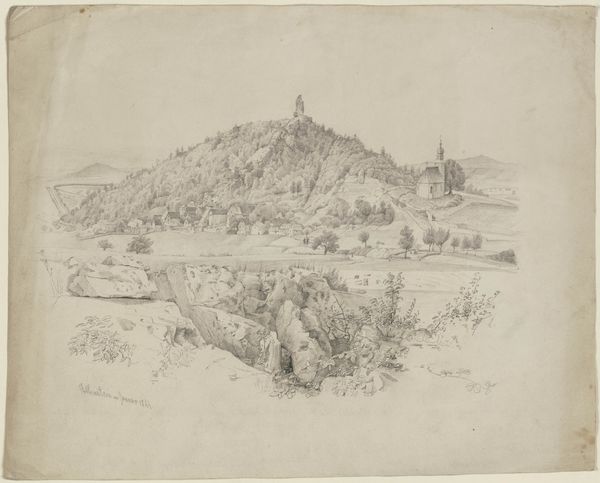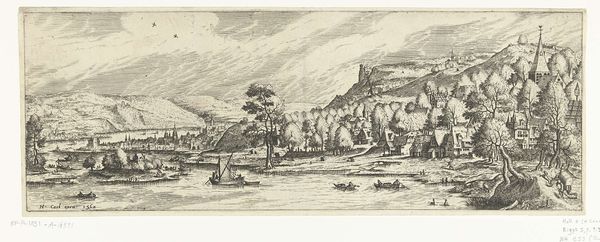
drawing, pencil
#
drawing
#
impressionism
#
pencil sketch
#
landscape
#
etching
#
pencil
Dimensions: height 296 mm, width 463 mm
Copyright: Rijks Museum: Open Domain
Editor: Here we have Théophile de Bock's "Village on the Water at the Foot of a Hill," probably from 1889, a delicate dance of pencil on paper. There’s a dreamlike quality, a hazy, soft focus that almost feels like a memory being sketched out. It’s both calming and a bit melancholy to me. What's your take? Curator: It whispers, doesn't it? A fleeting moment captured, like trying to hold onto mist. I see echoes of Corot in its quiet poetry, a kinship in capturing light and atmosphere. Look how he’s suggested so much with so little. The strokes aren’t precise; they’re more suggestive. What do you think that communicates? Editor: It feels like…transience, like everything is subject to change. Nothing is fixed, everything flows. Curator: Exactly! And notice the high vantage point; it creates a certain detachment. A witness to life, not necessarily immersed in it. There's also a wonderful balance of light and shadow. De Bock clearly loved the subtlety of greys! Do you pick up on Impressionistic elements beyond just the haziness? Editor: The reflections on the water definitely feel Impressionistic! I hadn’t really thought about the vantage point, though. That’s a good point. It definitely lends an air of observation to the work. Curator: It’s about capturing the feeling of a place, the essence, rather than photographic realism. Something the Impressionists did masterfully. De Bock’s whispering village makes me want to sit by that water, even if it’s just for a little while, wouldn’t you agree? Editor: Definitely. I feel like I have a better understanding now of how technique informs mood. Curator: And isn’t that the joy of art – learning to hear its whispers, its secrets.
Comments
No comments
Be the first to comment and join the conversation on the ultimate creative platform.
